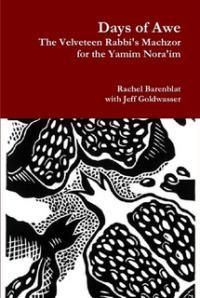
Two blog posts this week hinted at the struggle many interfaith families, and many Jewish families, have with the intimidating length and inaccessibility of traditional High Holiday services. In The Forward‘s interfaith advice column, I responded to a woman who feared these services would alienate her interfaith husband from Judaism. And over at Kveller, a mother admitted she was not going to require her children to attend services, even though they are an otherwise deeply-engaged Jewish family. One response to such questioning has been to blame those who are disaffected: if you only knew more Hebrew, and more Torah, (if only you hadn’t intermarried), you wouldn’t be fidgeting at the three-hour mark. And in the other corner, we have Rabbi Rami Shapiro (a self-defined Holy Rascal), explaining why he avoids the “medieval worldview” of conventional High Holiday services himself, calling them unfulfilling. He says he would rather go take a contemplative walk in the woods.
Meanwhile, many of the most progressive Jewish communities have been working to create services that will honor tradition, while also breathing new life into Rosh Hashanah and Yom Kippur (as well as all the rest of the days in the Jewish calendar). One of those visionaries is Rabbi Rachel Barenblat, an accomplished poet and Jewish Renewal rabbi often known by her blogging moniker, The Velveteen Rabbi. This year, Rabbi Rachel has published (with Rabbi Jeff Goldwasser) a gorgeous new Machzor (the prayerbook specifically for the High Holidays). Days of Awe inspires with new translations, lively illustrations, and poetry that avoids platitudes. Along with her own marvelous poems, she includes poems from Yehuda Amichai, Leonard Cohen, Marie Howe, David Lehman, Alicia Ostriker, Omar Khayyam, Phillip Schultz, Hannah Szenes, Herman Taube, and Rumi. The translations and interpretations come from rabbis including Shlomo Carlebach, Jill Hammer, Burt Jacobson, Marcia Prager, Rami Shapiro, David Shneyer, Hannah Tiferet Siegel, and the much-beloved Zalman Schachter-Shalomi, founder of Jewish Renewal.
In addition to infusing the services with carefully curated poetry and translations, this prayerbook invites and welcomes all (interfaith, disaffected, seeking) by explaining the sense and structure of the services. For instance, the repetition of the Kaddish through the services can seem bewildering and stultifying. Rabbi Rachel stops to explain that the Kaddish acts as a door to mark the transition to each new section of the service, and her Machzor illustrates this concept with a series of lovely photographs of different doors inserted with each recurrence of the Kaddish.
One poem from Days of Awe holds perfectly the tension between the desire to return to ancient communal prayer, and the desire to renew with a walk in the woods instead. Do both. (Ah, bothness…the favorite theme of all interfaith children). In the moving and elegiac poem “For I will consider your dog Molly,” by David Lehman, the poet takes us from a Rosh Hashanah morning service, in which he mourns his father and is comforted by “Hebrew melodies,” to an afternoon ramble with a companion and her dog to perform the traditional Tashlich ritual of throwing sins into the water. This poem, a narrative with characters and unexpected moments of humor and pain (and echoes of Ulysses), has nothing in common with some of the bland, cheesy verses that seem to end up in prayerbooks edited by committees.
As a small child in New England, the highlight of Rosh Hashanah for me was indeed the family tradition of afternoon apple-picking, not the long hours of services, though eventually I did grow to love the services too. With Days of Awe as a prayerbook, more families, interfaith and otherwise, will be able to both return and renew. Rabbi Rachel writes, “Take risks. Try new things. (Try old things!)” I expect Days of Awe will become the standard prayerbook in many Jewish Renewal communities, and, I hope, exert an influence throughout the increasingly diverse and complex Jewish world.

